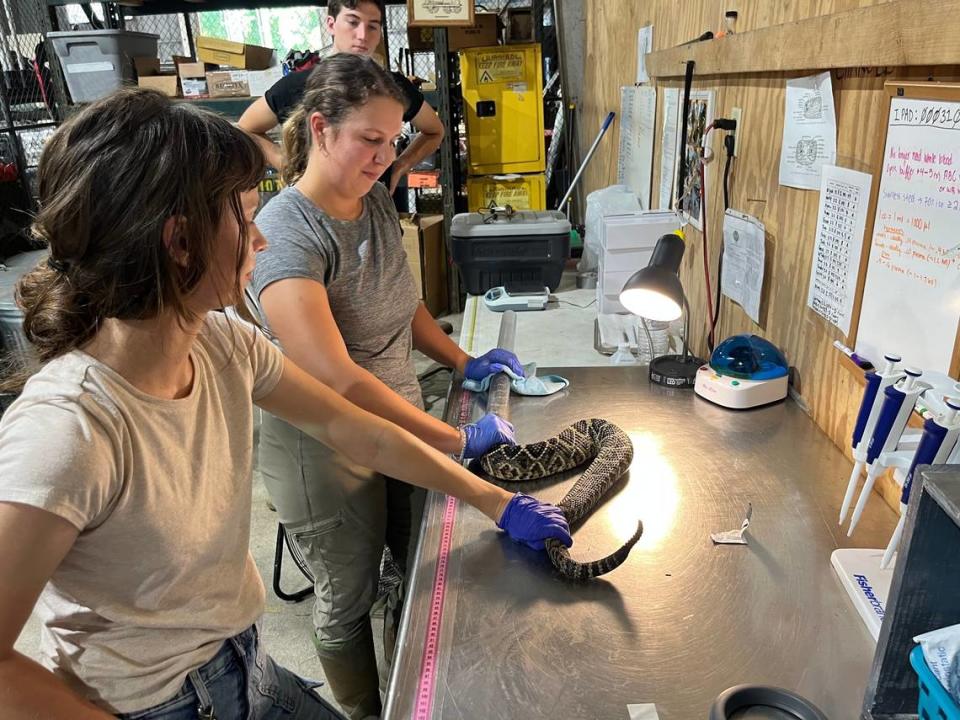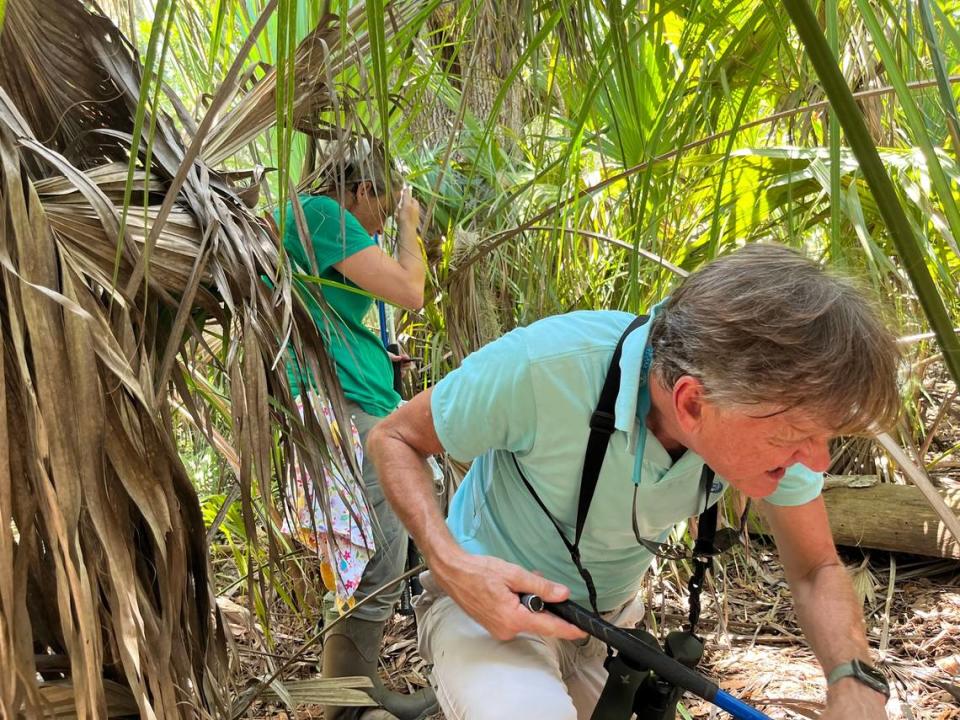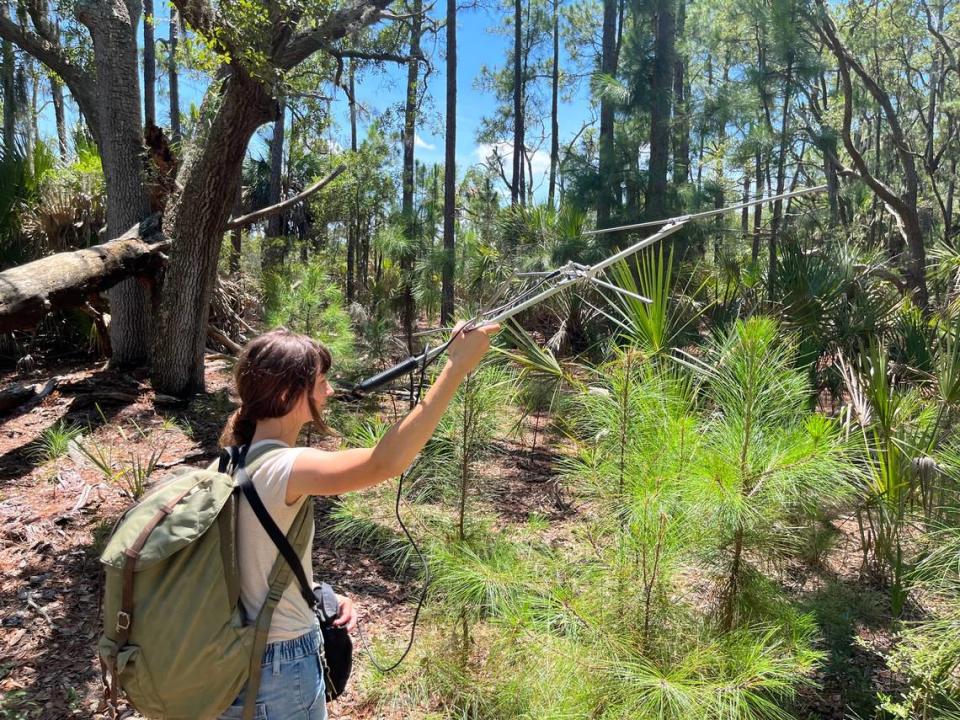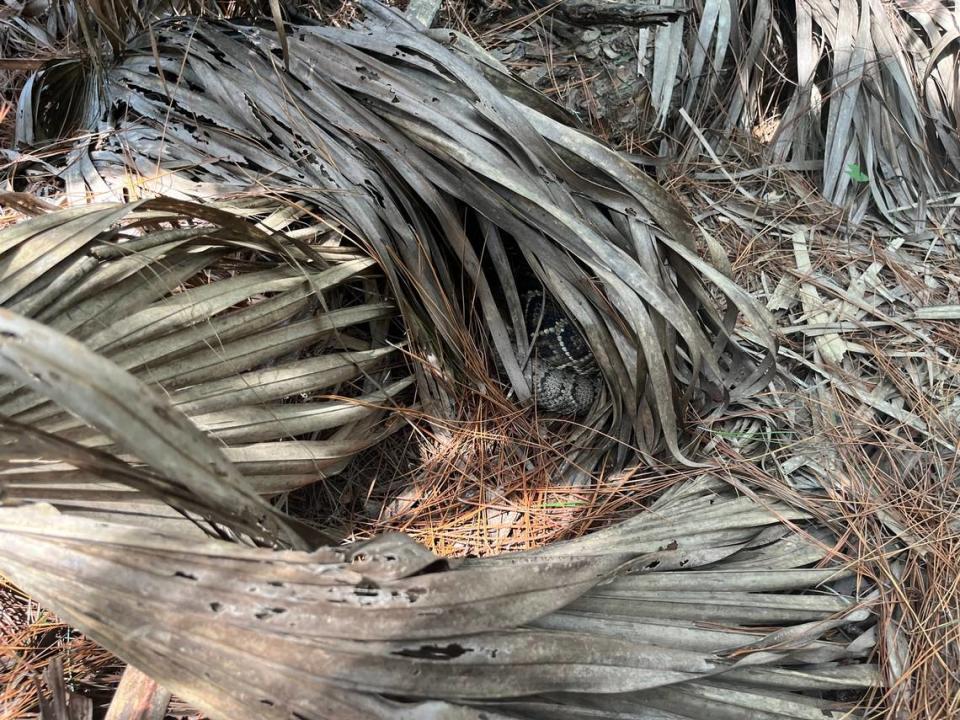World’s biggest rattlesnakes can swim from Parris Island to Hilton Head
On Oct. 28, 2017, a 5-foot-long, 6-pound male eastern diamondback rattlesnake was found dead on a road on Hilton Head Island. It had been run over by a car. But how did this snake, which originated on Parris Island, the location of the U.S. Marine Corps Recruit Depot, make it more than 5 miles across the salty waters of Port Royal Sound to Hilton Head?
It turns out, researchers discovered later, that the plucky snake swam, undulating through the waves of the Broad River. It was the farthest migration of an eastern diamondback rattlesnake from its home range ever observed.
“They are the ultimate underdog,” says Jayme Waldron, a snake expert and professor of biological sciences at Marshall University in West Virginia.
Very few people like rattlesnakes, but if you have eastern diamondbacks on your land, Waldron says, it’s a sign you are managing the natural resources well. And that should be viewed as a badge of honor, she says.
But the apex predator is struggling to hang on in the longleaf pine forests and coastal lowlands of southeastern United States, primarily because of habitat loss. It’s venom is also in high demand for use in research labs. There are no legal protections for the snake, which Waldron says is as much a symbol of the Lowcountry as the Palmetto tree.
“It’s sad,” Waldron says. “They should be way more widespread than they are.”

U.S. Marines, with Waldron’s help, have been tracking the movements of eastern diamondbacks on Parris Island — and off of it — since 2008. The effort started out as a way to minimize conflicts between Marines and rattlesnakes but it’s evolved into what has become the longest-running tracking project of the largest and most venomous rattlesnake in the United State.s
The goal is learn more about snake’s population, which is on the decline across the southeastern United States, and breeding habits and life histories.
‘Shrimpers have caught them’
The remarkable journey of the eastern diamondback to Hilton Head a few years ago is only known because of a microchip that was planted under its skin on Aug. 15, 2015 on Parris Island, two year’s prior to its death, as part of that study.
“Shrimpers have caught them for years in their shrimp nets offshore,” John Holloway, the civilian natural resources manager at U.S. Marine Corps Recruit Depot Parris Island, said in reference to the long dispersal of the Hilton Head rattler.
Still, while eastern diamondbacks are capable swimmers, the long excursion to Hilton Head was particularly notable because it was made over water — and by an older snake. It’s usually the younger ones that travel the farthest.
The snake may have traveled to Hilton Head entirely by water, or he may have island hopped, Holloway says. The suspicion is that it was crossing a river or creek on the island and the tide swept it away, but nobody knows for sure.
“It wouldn’t have wanted to go to Hilton Head,” said Holloway, noting that snakes have all the food they need on Parris Island.
Eastern diamondbacks, known for their distinctive diamond-shaped skin patterns and large triangular-shaped heads, can live more than 20 years but population growth is slow because they only produce eggs every two to four years. They can be brown, yellow or tan with distinct black, brown and cream diamonds on their back and blend in brilliantly in the Lowcountry. The best way to detect them, Waldron advises, is to look for changes in texture, not color.
The oldest snake Parris Island researchers have captured is “Hussie,” so named because she has bred with multiple males. Waldron says. She may be 30 years old, which would make her older than most of the students who assist Waldron in the research. Waldron says she is a “giant.”
The largest snake caught to date is Elijah, who was 9.5 pounds at capture.

The eastern diamondback rattlesnake population at 8,100-acre Parris Island, while not known, is considered healthy. That’s why it’s an ideal place to study them.
The snakes ambush rats and rabbits and fox squirrels, injecting deadly venom through fangs up to three-fourths-of-an-inch-long. Home ranges are smaller than inland eastern diamond backs, about 5 to 50 acres, because of the small size of the island.
“They have everything they need,” Holloway says.
Are protections coming?
Occasionally, the big snakes can put a scare into a Marine recruit training in the toolies, but they rarely bite people, preferring to flee if they can. “They are not a very bitey snake,” Waldron says.
Over the 15 years of the study, Marine researchers and Marshall University students have captured up to a 1,000 snakes. Microchips have been inserted in all of them so researchers can identify snakes captured more than once. Some of the snakes get transmitters so their movements can be tracked. The transmitters are attached to their rattles with glue and thread.
The information that’s being gathered from the study could prove vital in efforts to saving the imperiled pit viper, which is a candidate for listing under the Endangered Species Act. A decision from the U.S. Fish and Wildlife Service whether to protect it could come as soon as next year. In South Carolina, the eastern diamondback is listed only as a “species of concern,” which does not provide any legal protection.
Habitat protections are critical to the snake’s long-term survival, Holloway says.
“You can protect the animal,” says Holloway, “but really, you need to protect where it’s living.”
Longleaf pine once dominated the coastal plain blanketing more than 90 million acres from Texas to Virginia, according to the Nature Conservancy. Today there are just 5.2 million acres, up from an historical low of 3.2 million acres two decades ago.

Military bases that have not been as developed and have less public access can be a “last resort” for species that are in decline because of development pressures, Holloway says.
The snakes not only keep rodent populations under control, Holloway says, but also reduce the numbers of ticks because they eat mammals that the blood suckers feed on.
While most people try to avoid the snakes, Waldron and her students march through the marshlands and thick forests clogged with palmetto and pine trees at Parris Island looking for them in logs, under trees and in holes.
Looking for snakes
One day earlier this month, Emily Gray, a master’s student in biological sciences at Marshall, set off walking through the forest, pushing aside palmetto tree branches and stepping over logs and listening to “beeps” from a VHF antenna she was holding in the air gathering signals from a snake. “Watch out for alligators — and snakes,” somebody in the research crew says.

All wore boots covering their calves, just in case.
“We’re close,” Gray says. But the trail ran cold at a big log. Kate, it seemed, was holed up and out of sight.
Later, a small male was discovered at the base of a tree, about 75 yards from an alligator’s nest. When discovered, it didn’t make a sound and slithered away. In another location, not far from the base golf course, Gray veered off of a gravel road and found “Roy” coiled in “ambush position” under a palmetto tree fond, motionless and silent and almost invisible.
Earlier in they day, wearing purple gloves and holding a long stick with a hook on the end, Gray, scooped up a previously captured snake from a cooler and placed it on a blue tarp. With the stick in one hand, and a clear plastic tube in the other, she coaxed its head toward the tube so it could be safely handled.
Then it was carried to a counter where a tag the size of a big grain of rice was attached. With its tale rattling, the perturbed snake sprayed Gray with a repugnant musk, an anti-predator defense. Gray says she loves the work.
“They’re such a fascinating animal in general,” says Gray, “and they are so cryptic.”


